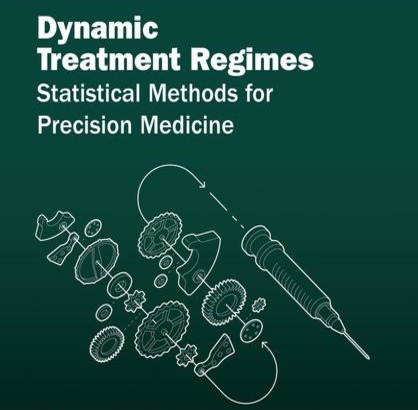Chapter Objectives
There are two objectives in this chapter. First, we seek to estimate the value of a fixed treatment regime in the setting where there are \(K \gt 1\) decision points at which treatment selection will take place. In the nomenclature of potential outcomes this value is defined as
\[ \mathcal{V}(d) = E\left\{Y^{\text{*}}(d)\right\}, \]
where \(Y^{\text{*}}(d)\) is the potential outcome that an individual would achieve if all \(K\) rules in \(d\) were followed to select treatment.
Here, we provide an implementation for the inverse probability weighted estimator of the value of a fixed regime discussed in Chapter 5 of the book. As was done for previous methods, we
- provide a quick review of the form of the estimator,
- define an estimator specific form for standard error estimates,
-
present
R code to illustrate how one can implement the method and standard error being discussed, and - show the results of those implementations.
The implementation discussed is not general, having been written for the example data set, and it does not incorporate validation steps that we believe are important in all code development. We provide more general and robust implementations through an R package DTRBook, which is available for download under the
The second objective in this chapter is to identify an optimal treatment regime
\[ d^{opt} = \underset{d \in \mathcal{D}}{\arg\!\max} ~ E\{Y^{\text{*}}(d)\} = \underset{d \in \mathcal{D}}{\arg\!\max} ~ \mathcal{V}(d) \]
The estimators for \(d^{opt}\) discussed in this chapter have been implemented in
